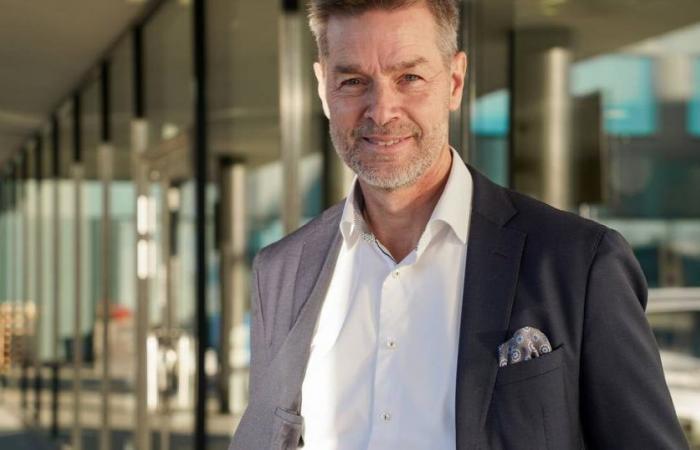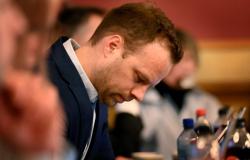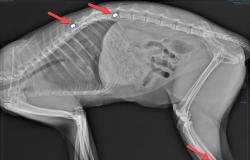In the EU, there is a growing understanding that nuclear power is needed to achieve the goal of climate neutrality in 2050. The EU has launched an alliance for broad cooperation on a new generation of nuclear power plants that could become important in the EU’s green shift, but also become a new industry for Europe. They are small, modular reactors, abbreviated SMR. In that area, the EU must compete with the USA, China and Russia.
The managing director of the Institute for Energy Engineering (IFE), Nils Morten Huseby, sees the EU collaboration as a chance to consolidate IFE’s position as Norway’s leading research foundation within nuclear energy.
Consolidate your position
The IFE boss believes it is important to follow what is happening in Europe, where the EU has invited institutions, companies and authorities in 40 countries to participate.
In June, those who have joined the alliance will gather for the first meeting in Brussels to set the course for the EU’s nuclear power investment.
Small modular reactors are not unfamiliar terrain for IFE.
– We are working on this within control room technology, because SMR has special challenges. If you have a normal nuclear power plant, then you have a reactor to keep an eye on. When it comes to SMR, it may be the case that the same control room must monitor 12 reactors. We are researching safety, and what the human factor means, explains the IFE manager.
Today, security bodies, authorities and companies from 20 countries worldwide are involved in the so-called Halden project. It is an OECD project under the auspices of IFE.
– One of several success criteria for us will be whether we get more partners in this project, which will strengthen international cooperation on nuclear safety. The 20 countries represented today are not all European. There is room for more, he explains.
The Halden project researches, among other things, safe life extension for nuclear reactors. This is important, not least in Europe where a number of reactors are approaching retirement age.
Also read: Norway withdraws from controversial oil agreement
IFE is Norwegian nuclear history
The CEO of Huseby consistently uses the word nuclear power. Although the institute he heads was called the Institute for Atomic Energy when it started in 1948. The name change was an underlining that today it researches more than nuclear energy.
The nuclear reactor at Kjeller was the first of its kind, outside the original nuclear powers, when it opened in 1951. In the 1950s and 60s, this was a regular stop for all royal or political leaders who visited Norway, from the Shah of Iran to Israel’s Prime Minister Golda Meir .
It is five years since IFE shut down its last nuclear reactor. The nuclear adventure in Norway is the story of enormous enthusiasm from the 1950s until nuclear power became politically radioactive. It happened at about the same time that Norway seriously took the step into the oil age.
IFE as an operator of nuclear power is history. Huseby is clear that IFE will not operate any future nuclear power plant in Norway.
Today, IFE is an independent research foundation. More than 700 people from 38 countries work in IFE.
Yes to nuclear power – perhaps not in Norway
– Should Norway build a new reactor?
– We at IFE are for nuclear power, but not necessarily in Norway. The reason is that in Norway you have many other opportunities. Whether we should have nuclear power or not is a political question. Our task is to present the facts. Both for those who are in favor and those who are against nuclear power, he emphasizes.
Huseby has garnered a storm for predicting that nuclear power in Norway is unlikely to be relevant until the 2040s. Nuclear power takes time to build. The regulatory framework must be in place. Today, SMR are scaled-down copies of the large works. They have the same challenges with waste, and they are not yet commercial. There is a lot of talk about fourth-generation reactors with little waste, but they are still at the research stage.
Also read: Trond Giske: – No, it’s not going well enough (+)
Debate from the trenches
He welcomes the debate on nuclear power in Norway as well, but has a small warning:
– There are two ditches that the debate we are now seeing in Norway can end up in. One is to say that nuclear power is the solution. Therefore, we do not need to discuss the development of renewable energy, which for us is particularly wind power. Nuclear power is not a solution in the short term. If anyone thinks so, Norway will steer towards an imminent energy crisis. The second ditch is to say that nuclear power is completely unrealistic in Norway. Therefore, we do not need to discuss it. Then in 10–15 years we could be in the situation where we have a power crisis in Norway.
According to the IFE director, the energy debate is about being able to have two thoughts in your head at the same time. Resolve the acute crisis with the funds that are available and be open to building up expertise for the possible use of nuclear power in the future.
Also read: Kalle Moene: – The Left should simplify the welfare state (+)
Where do you get uranium from?
The EU’s climate and energy policy should make the Union more independent from gas imports. The import of gas, coal and oil from Russia has fallen drastically.
– Today, Europe imports around 97 percent of fuel for nuclear power from Russia, Kazakhstan, Niger and Canada. Is there not a danger that increased investment in nuclear power could make the EU dependent on imports from countries with regimes that we do not like?
– Yes, absolutely. The dependence on imports is also one of the reasons why reactor fuel is not covered by the EU’s sanctions regime against Russia, he explains.
But work is now underway to secure uranium for the EU from countries with regimes we like better. This is something that is high on the agenda. There is a lot of uranium in countries with regimes we cooperate well with, Canada for example has a lot of uranium, he says and adds:
– But that means that you have to develop mines to extract uranium and build out processing facilities. That is, see the entire value chain as one. This is going to take time. In the long term, this will not be a limitation for investing in building more nuclear power, he emphasizes.
Also read: Here are the AFP measures that can secure your pension
—
Alf Ole Ask is Energy and Climate’s correspondent in Brussels. Ask writes about what is happening in the climate and energy field in the EU, and how this affects us in Norway. Energy and Climate is Norwegian Climate Foundation online newspaper. The position in Brussels is supported by Agenda Vestlandet, Fritt Ord and the Bergesen foundation.
—
Keep yourself updated. Get a daily newsletter from Dagsavisen
Tags: IFE hijack nuclear partners Dagsavisen
-





